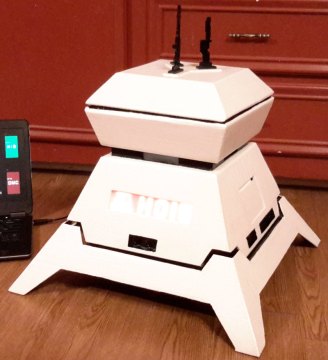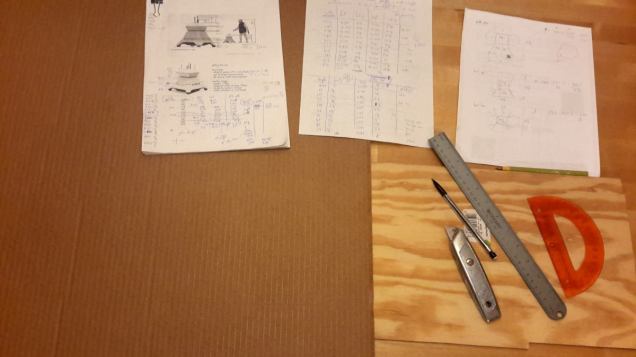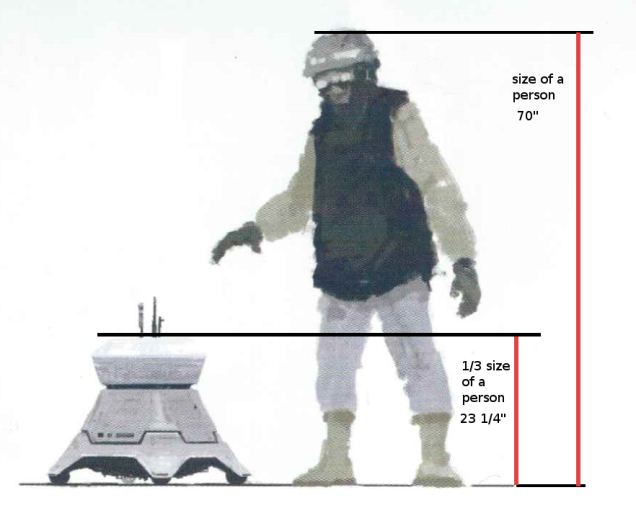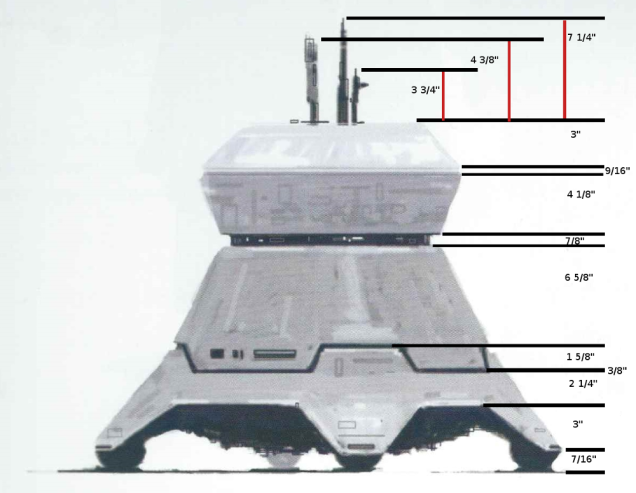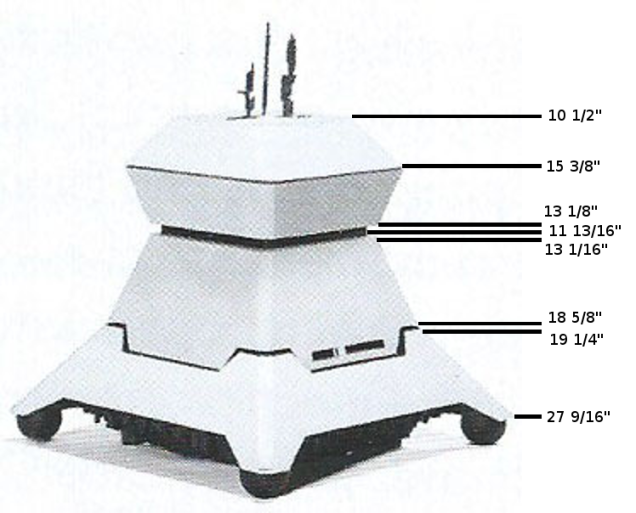The H015 droid needs to provide access to the electronics. This could be either through a hole in the bottom plate, or through the neck. The former does not sound like a good idea. In particular, once the antennas are in place it will be a pain to turn the droid upside down. The latter requires the head to be removable – this requires some precise work, to ensure that the head sits straight, without being able to wiggle in its slot.
The original H015 in TFA features some lights in its neck. In the movie, the lights in the neck appear to be blue (at 20:58). In another scene (at 1:36:24) they also seem to be red. Although this might be some reflection, we will use red and blue lights. For this purpose, we use sets of three RGB LEDs, for which only the red and blue elements will be connected. The LEDs are mounted behind some matte white transparent plastic (taken from a gallon bottle of vinegar), to make the lights from the individual LEDs blend into each other. From the appearances in the movie one cannot tell on which sides the LED rows are. We put them on the front, and on the left and right sides.
We start the neck structure with two layers of cardboard to which the plastic pieces are glued. Five more layers of cardboard are added to provide support for the head.
The structures for the LEDs are made from pieces of cardboard, glued to popsicle sticks. These are painted black, and glued to the inside of the neck. Now we cut out the opening at the top of the body which provides access to the inside of the droid.
Four corner pieces (made of three layers of cardboard are then glued to the head. This step requires high precision – otherwise the head may not sit straight, it may have space to wiggle, or it may not fit at all.
After removing the cardboard at the bottom of the droid, the final shape becomes visible.
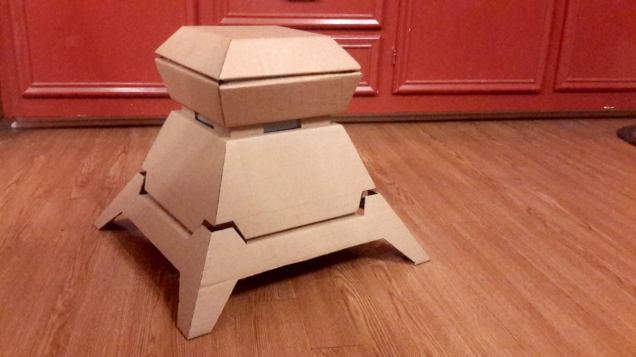
Yeah!
